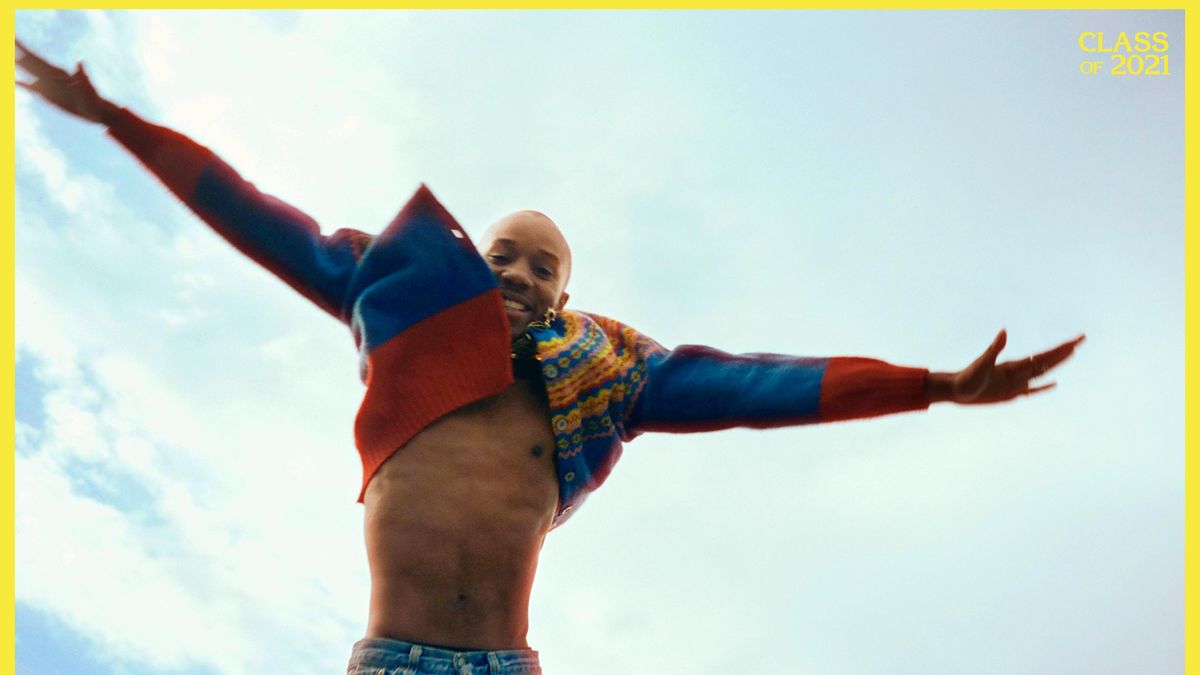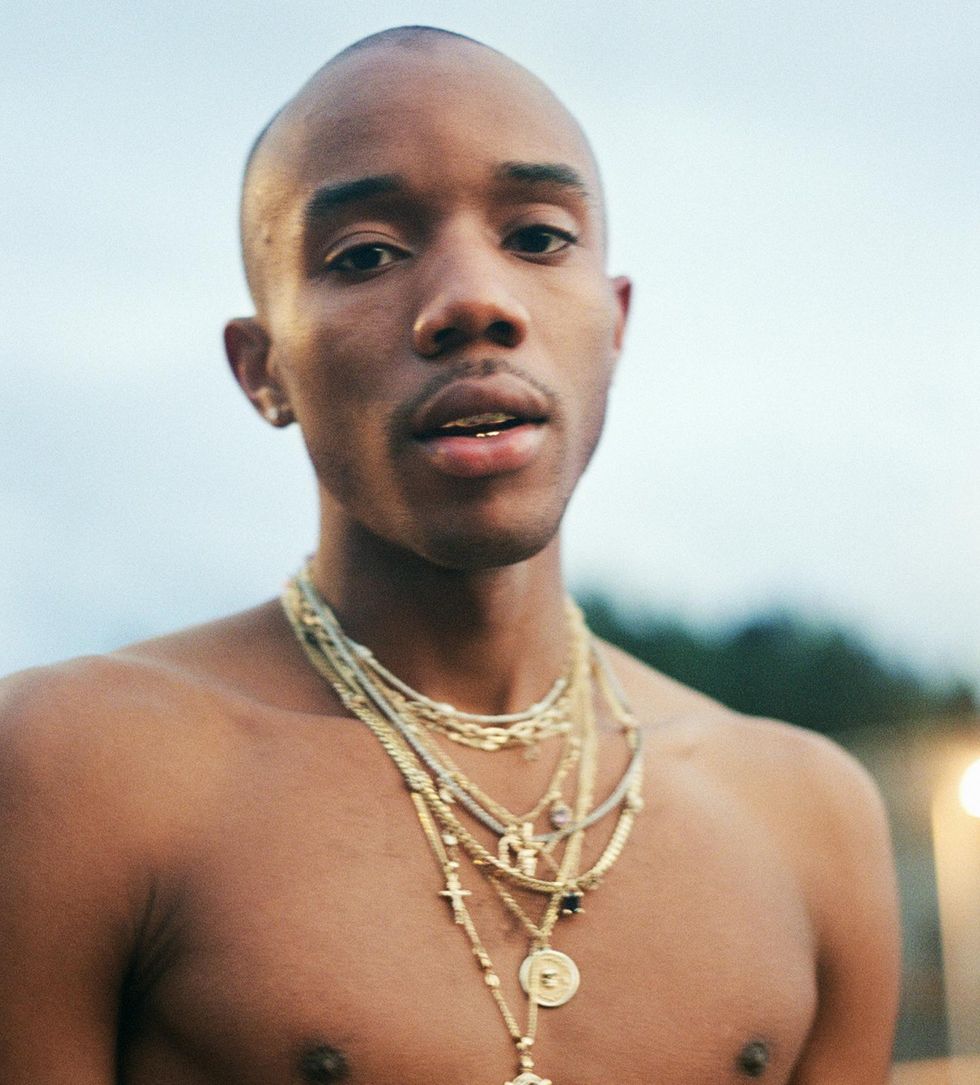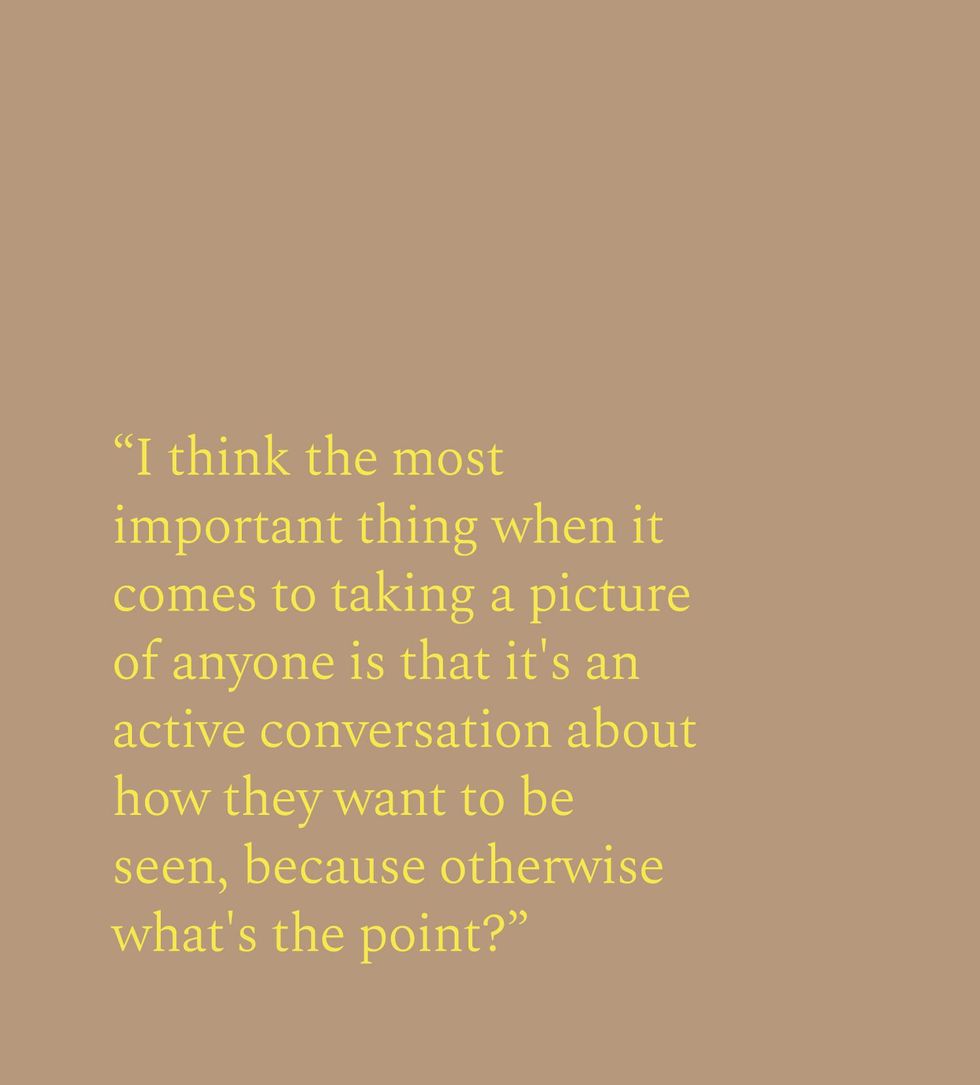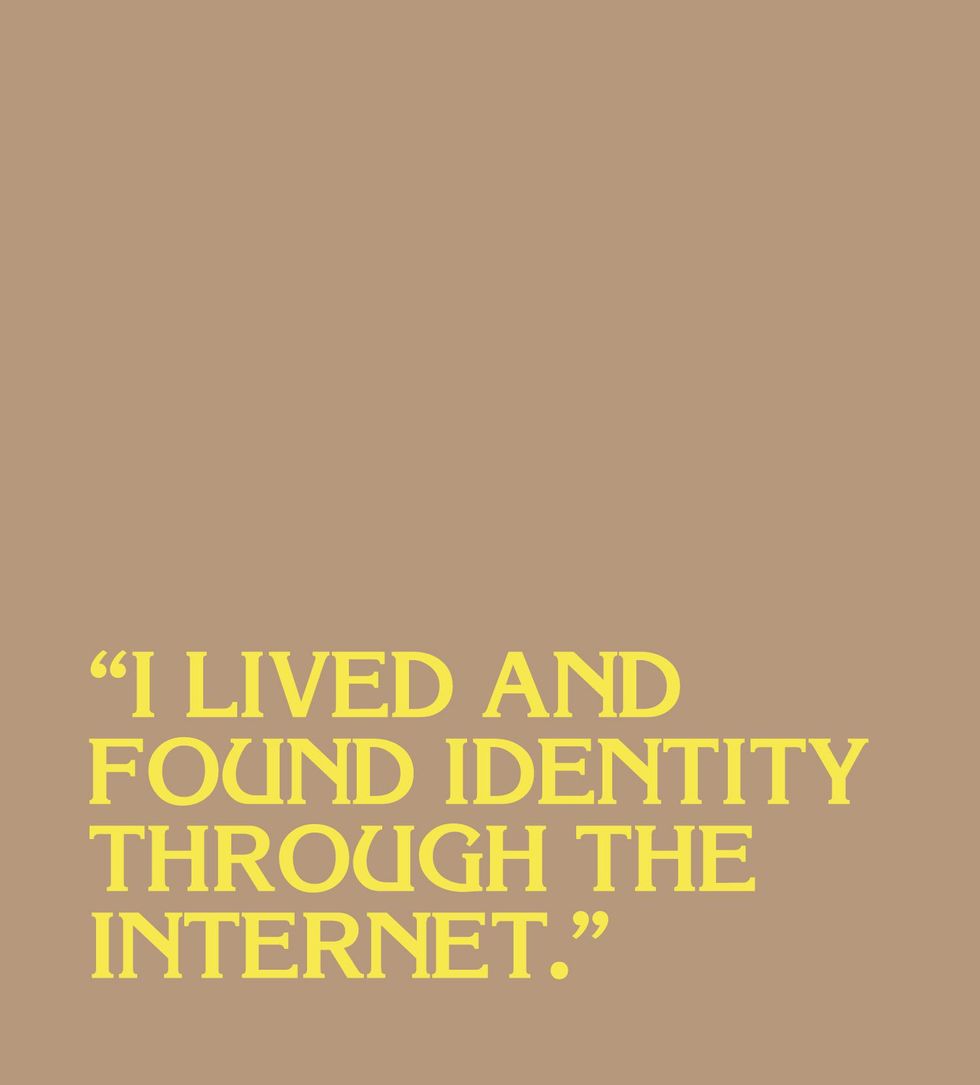Quil Lemons Takes Photographs That Speak the Truth
This self-dubbed Tumblr kid holds a major stake in today's cultural conversation.

It's the year 2015. 13-year-old Billie Eilish has just dropped 'Ocean Eyes' and 18-year-old fledgling photographer Quil Lemons is bewitched by the haunting quality of her voice already present at such a young age. "I messaged her on Soundcloud," he recounts. "I was like, 'hey, I would love to shoot you.' She had these crazy blue piercing eyes. I just knew this was going to be a really big commercial song. I knew it was a hit."
Fast forward five years and you'll find Lemons standing in front of Eilish, camera in hand, shooting her for the cover of Vanity Fair's March 2021 issue. Shot mere days after the 2020 election, doomsday news alerts attempted to thwart the escapism-inducing creativity that flowed on set. A common headspace of the past few years, Lemons regales how, "We were thinking like hopefully the world doesn't fall apart before this cover comes out, but if not, we still had this amazing day and moment together."
The historical boundaries Lemons shattered amidst this cover shoot were twofold. "To infiltrate that space as a young person was insane because I was 23 joining a guard of photographers that were some of the first people to really revolutionize the act of taking a picture. That was insane and then I'm also Black. I'm one of two Black photographers who have shot that cover." Though the cover broke in March (it currently hangs framed on the walls of his New York City apartment), Lemons is still processing its significance almost a year later.
The perceived reputation surrounding Vanity Fair, Lemons notes, is one of fame at times elevated to the level of royalty. "To have a Vanity Fair cover means one, that the fashion world fucks with you but two, that you are also big enough socially to be on this cover. It's a culmination of a lot of levels of intense fame." Those cover stars receive a stamp of approval from the amalgamation of the pop culture zeitgeist. In Lemons' words, "You are of this time and of this moment."


Though the young photographer was speaking of Eilish when he posited the above statement, he might as well have been describing his own standing in today's cultural conversation. This year alone, he shot the Pride campaign for Savage x Fenty and lensed the Vanity Fair portraits for the 93rd Academy awards. Alongside Eilish and Clemens, his roster of cover stars also includes Keke Palmer and Alicia Keys. Prior to the Vanity Fair spread, Lemons lensed designer Telfar Clemens for the cover of Time magazine at the start of the year, another bibliographical testament to both subject and artist's timely pertinence.
Between Vanity Fair and Time, the two spreads are totally different—one paints a picture of a star embracing womanhood in her own fashion, the other, a designer atop his boundary-shattering empire—but both exude that same Lemons spark of personality. "I hope that you can tell I shot this image," says Lemons of the Time cover, but even before that, "I hope that you feel the subject." To not only see but feel their presence is a difficult thing to communicate via a page-bound image. "I think the most important thing when it comes to taking a picture of anyone is that it's an active conversation about how they want to be seen, because otherwise what's the point?"
So naturally, I asked what you're all likely thinking: how do you actually do that? Apparently, it begins with the simple act of saying hello, asking, what's going on? to break the ice. Then, of course, comes a substantial amount of research in order to know your subject inside and out. The photographer notes that he watched every video of Eilish and consumed everything and anything written about Clemens. This reporter-like mentality is not unwarranted; Lemons actually majored in journalism at the New School here in New York.
Photography dances tantalizingly along the boundary between art and journalism. As for Lemons' place in this equation? That he's still figuring out. "If you stepped into my mind," he muses, "I think we'd both get lost." His photos can make you smile but break your heart. They are all laced with a sense of melancholic humour via the occasional oddity in dress or posture that immediately draws outsiders in.
"I think that's just my personality," he notes. "Also, there's just a lot of trauma and pain that comes with being Black and I think a way to cope with that, I've learned, is by laughing. Shit's going to suck and I think you have to find a way to cope. My natural disposition is like, we're going to laugh through this and it will be fine."

As artists of my generation have started to question gender and queerness in the Black space, it makes people talk about it and then it lessens it and then it invites more people into the work to continue talking about it."
Further evidence of both his superior talent and place within the cultural conversation, Lemons secured a place in the exhibit at the International Center of Photography, Inward: Reflections on Interiority, that runs from September 24th to January 10th. His series Daydreams portrays the intersection between the Black and queer communities, both of which Lemons himself resides in. He says that his contribution to this exhibit, all of which was shot on an iPhone, is a depiction of, "what's going on in my crazy mind."
After fighting the politicalization of his work in the early stages of his career, Lemons decided to embrace the power his work wields. "I don't think the work is inherently political," he says. "My Black body is a political space but it shouldn't be. Gender is a political space but it shouldn't be. I think that's something that you as a viewer should investigate." In tandem with the 2020 election, the BLM movement, COVID-19, it's hard to produce anything in this era, art or not, without at least someone extracting political meaning from it.
"As artists of my generation have started to question gender and queerness in the Black space, it makes people talk about it and then it lessens it and then it invites more people into the work to continue talking about it," he explains. These particular photographs use Black bodies decorated with everything from glitter to gritty rocks to poke holes in gender norms. "Let's keep talking about the things that we're talking about until it becomes normal. I think it's really cool to see a lot more Black gay men not adhering to heteronormativity in ways that once were normal in the community."
Beyond all these labels, the history-making 20-something simply wants everyone to be able to exist. "The idea of being nonbinary, that wasn't a thing 10 years ago," he continues. "What I'm thinking about isn't isolated as something that is artistic. I think that's what I'm trying to say with a lot of my work."


In the case work, Lemons is doing so in both the literal and emotional sense of the term. "I find a lot of strength in being vulnerable," he says in respect to both his art and personal journey. "I think that if you really get to know yourself on a very deep and intimate level, then there is so much power in that. I find power in vulnerability. I find power in things that are true. If you live in that, then there's really not much to say." This resistance towards over conversationalization in art is a common theme for Lemons. He's already done his part. The onus is instead on the viewer to do the work, ask the questions. "I kind of want to talk less," he says. "Right now I just want to do the work and just think. I would love to see if I can make something that is just universally, ubiquitously understood."
The shift in mood is palpable as Lemons oscillates between speaking of his creative process versus prescribing what someone should glean from his photographs. He grows almost stoic when discussing the seismic shifts his work has stimulated, taking on the gravity of those issues. This 24-year-old Philly native carries the weight of intersections: Black and queer, vulnerability and strength, youth and wisdom. Though when he talks about his process, he errs more towards a youthful excitement that has as much to do with passion as it does with age.
Another testament to the era in which he was raised, Lemons notes that the eerie weather present the day of this interview reminds him of Skins, a British TV show from the 2000s that also utilized humor to curtail controversial subject matter like substance abuse and sexuality. Lemons, like many of us whose formative years were in the early 2000s, developed a relationship with fashion and media online. "I was actively on the internet," explains Lemons, who refers to himself as a "kid of Tumblr." These pockets of the web—I dare you to find me one Skins fanatic that wasn't also on Tumblr or vice versa—were places to connect over shared interests and common struggles with other confused teenagers across the world. It was a place to divulge your pain while freeing yourself from the confines of your physical locale through knowledge and creativity. "I lived and found identity through the internet," he says.
Interspersed throughout his Instagram portfolio of work—2021's pseudo Tumblr—you'll find glimpses into that side of him, like this one, where he jumps on the bed with a childlike sense of ecstasy, captioned "Not me living my wildest dreams," followed by a string of emojis including, of course, a lemon. The joy present in the image can't help but elicit a smile from its viewer and it resides in the company of not only his work, but pictures that show off his own style and physique in a more sexualized manner. This layered digital concoction, in a similar respect to his photographs, alludes to the dichotomies, intersections, and contradictions that exist within us all (especially the Tumblr kids). The differences lie in whether or not we want to embrace it.
Want more stories like this?
Styling without Boundaries: Understanding the Influence of Law Roach
Inside the Mind of Fashion Photographer Lia Clay Miller
Mark Seliger on the Role of Fashion in His Photography




